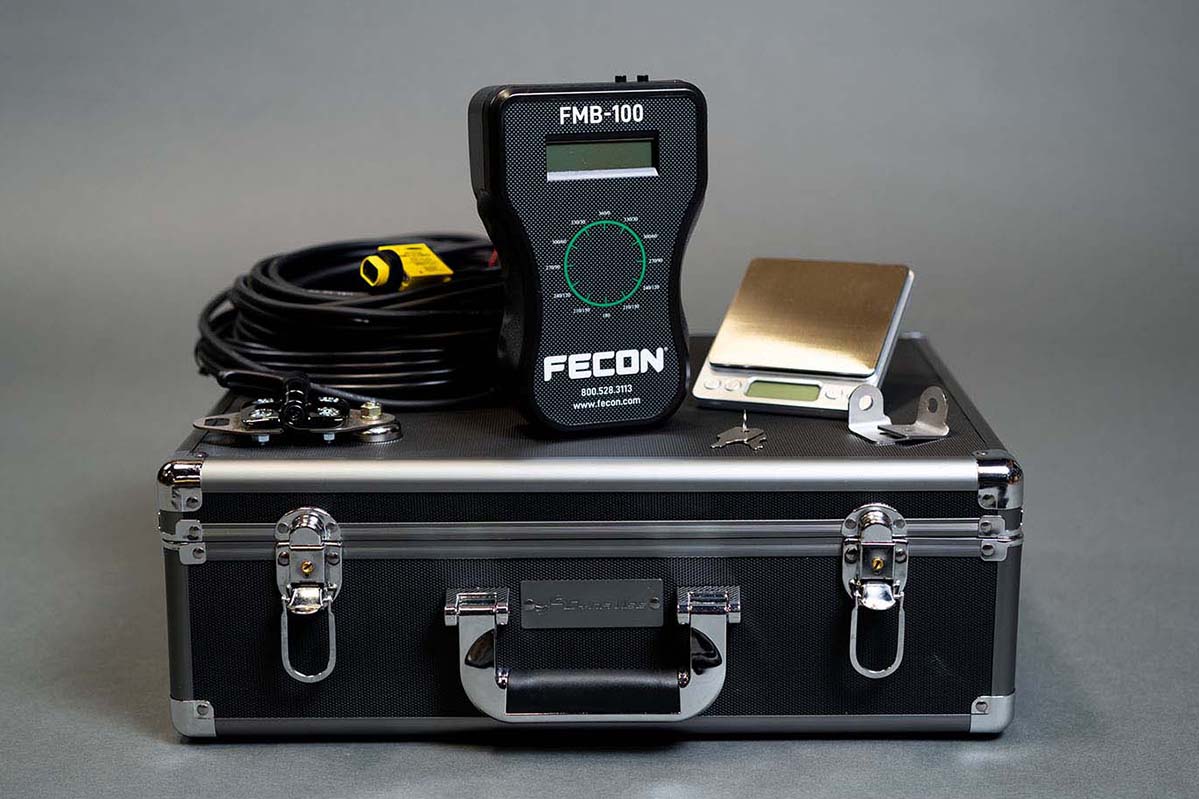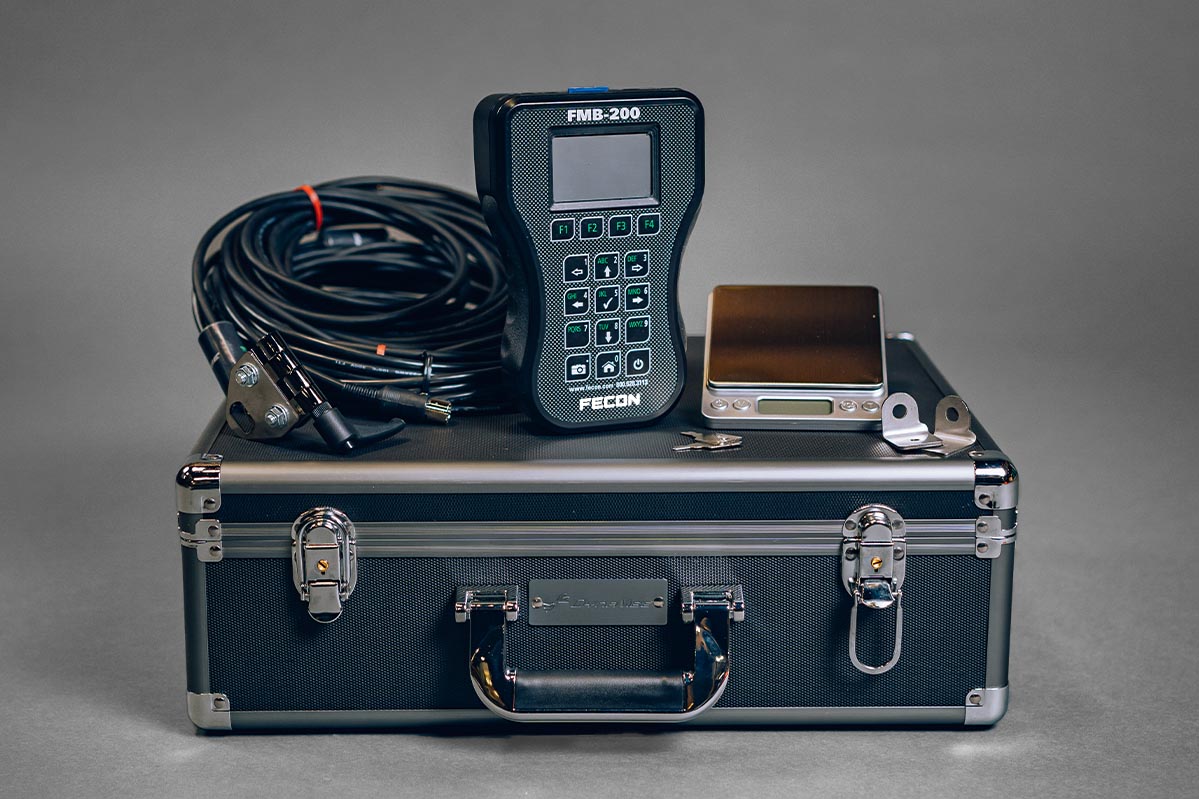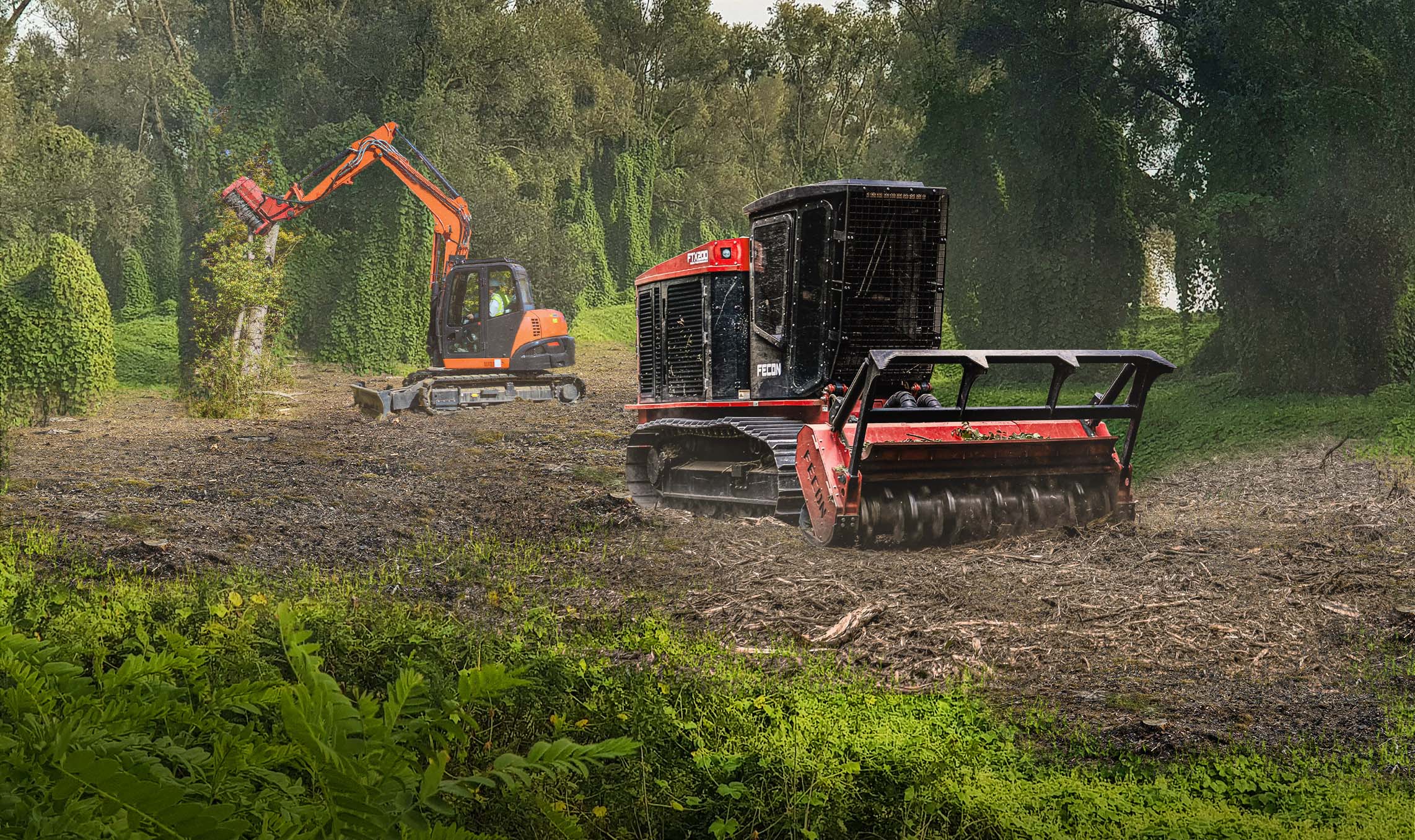Mulcher vibration can be caused by a wide range of sources. Most often, it is simply a mass imbalance of the rotor assembly. Even a statically balanced rotor can vibrate and needs to be dynamically balanced. It is virtually impossible to balance every rotating component and then mount each one perfectly. Even the simple act of remounting a rotor can cause a mass imbalance due to slight alignment changes. The Fecon Mobile Balancers graphically guide you through the dynamic balancing process so you can balance your rotor quickly and easily with the minimum number of runups.
FULL SPECTRAL VIBRATION ANALYSIS
FIX DAMAGING VIBRATION
TROUBLESHOOT VIBRATIONS BEYOND IMBALANCE
FECON MOBILE BALANCERS
COST-EFFECTIVE SOLUTIONS TO THE DAMAGING VIBRATION CAUSED BY ROTOR IMBALANCE
FMB-100 DYNAMIC BALANCER
The Fecon FMB-100 is an extremely cost-effective solution to the damaging vibration caused by rotor imbalance. The FMB-100 mobile balancer tells you how out-of-balance the rotor is (magnitude), and where adjustments are needed (phase/angle). Once these adjustments are made, you will notice an amazing difference in performance and efficiency.
Complete Kit: $2,750


FMB-200 DYNAMIC BALANCER
The Fecon FMB-200 is a state-of-the-art dynamic balancer with full spectral vibration analysis. Not only does it walk you through the balancing process indicating where to add weight and how much, but it also analyzes all frequencies to help troubleshoot vibrations that are not from rotor imbalance. It can tell the difference between a rotor imbalance, a failed bearing, or bent shaft, as well as other
sources of damaging vibration.
*Including NIST Traceability and Scale
Complete Kit: $4,950
Product Demo Videos
What do I need to know to install a Bull Hog on an excavator?
COMMON QUESTIONS
WHAT FLOW AND PRESSURE DO I NEED TO RUN A BULL HOG?
MY HEAD HAS STARTED TO LOSE POWER. WHAT SHOULD I LOOK FOR AS THE CAUSE?
The mulcher uses the flow and pressure created by the carrier. If the carrier is producing adequate pressure and flow, these are a few common reasons the head might lose power:
- Loose or defective quick disconnects between the carrier and the head
- Relief valve in the protection block is set below the machine's system pressure
- Belt is too loose and has started to slip
Contact your local dealer if these suggestions do not resolve your issue.
I noticed my Bull Hog has a QR code imprinted on the serial number plate. What is this for?
How long do the standard double carbide tools last? How can I tell when my carbide tools need to be replaced?
What daily maintenance is recommended for my Bull Hog?
What torque do the tool bolts require?
What is the proper belt tension?
I need to add protection to my machine for operating a Bull Hog. What protection is recommended?
Any machine that runs a mulcher is required to have at least a ½” thick Lexan or polycarbonate windshield. We recommend a metal mesh guard in addition to the polycarbonate window.
Can I move my Bull Hog to a different carrier? What changes are needed to move my Bull Hog to a different carrier?
The Bull Hog can easily be moved from one piece of equipment to another with very minor changes.
What do I need to know to install a Bull Hog on an excavator?
If you are ordering a new Bull Hog, the mulcher will be configured to match your tractor, but you will need to provide pressures and flow for verification.
Talk to an Expert
Phone
Domestic
1-800-528-3113
International
00 + 1 + 513-696-4430
Balancer

“There’s nothing like seeing a Fecon in the wild, doing the work it is made to do!”
AP STUMP GRINDING
@APLANDMANAGEMENT